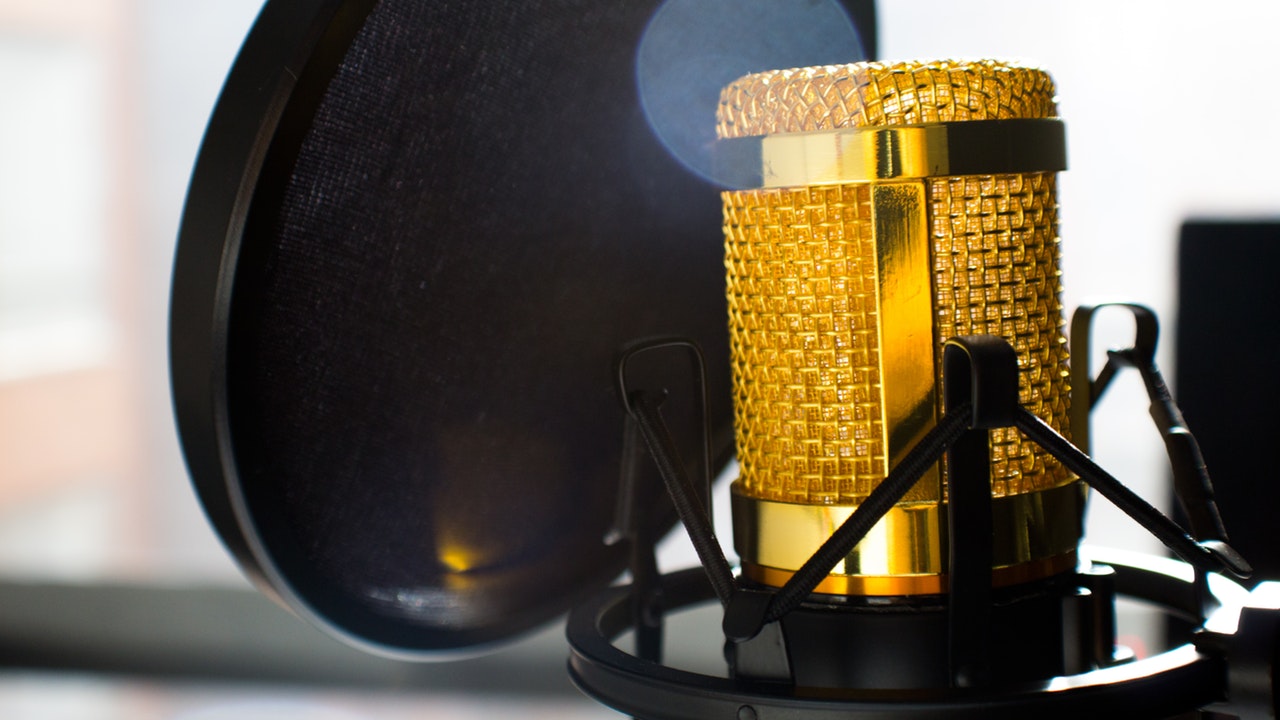What is it?

In Storytelling Fellows workshops, we always think it’s best for people to get started with making things and working with tools before we even meet for the first time in our video conferences. This assignment is meant to be a fun and informative way for you to become familiar with our tools. The introduction that you create in this assignment can certainly be used as a way to start on your project, but you could also develop an intro around a silly idea or concept. It's for you to decide.
Before you begin, get your recording gear in order. This could be a smartphone or USB microphone. Smartphones have access to Voice Memo (iPhone) or Audio Recorder (Android) software. You will also want to download your recording software of choice. We recommend downloading the latest version of Audacity.
Audacity alternatives
While a heavy focus of this workshop will focus on Audacity, we realize many podcasters who use Macs want to know about working with Apple's GarageBand. Members of the Coaching Team can help guide you on your use of GarageBand should you choose to work in that platform instead. UW-IT also has an online GarageBand curriculum to help you learn more about creating a podcast in the software.
Instructions
Using the video tutorial below or the text instructions on this webpage, please make a short introduction for an imaginary podcast. Please don’t spend more than an hour on this assignment.
Write your short script
In this assignment, you need a script. Your script should include your name, your podcast name, and what your podcast is about. At this point, you can just come up with any goofy or wacky podcast concept.
Record and import
You can record directly in Audacity using the Record button or you can record yourself on your phone and import your recording into Audacity. Check out a beginners tutorial or go directly to Audacity Manual to learn how to import audio files into your project. UW also provides an Audacity Online Curriculum to learn more about the software.
Importing audio from your phone
Have you run into issues importing your audio recording from your phone into Audacity? If you're on an iPhone, this is likely due to the file format not being recognized. You need to download and install the FFmpeg encoder and restart Audacity for the program to allow this file format to import. Instructions on downloading for Windows and for Macs are available.
Use basic editing functions
Once you have your recording imported, you can edit it using some common functions in Audacity.
Cut your tracks by using the Selection tool and the Split function. 
With the selection tool active, click on an area in your recording where you want to cut. Go to Edit --> Clip Boundaries --> Split. We suggest you learn the keyboard shortcuts for the Split function since it will be used quite often: ctrl+i or ⌘+i.
Delete selections in your recording by using the selection tool, highlighting a section, and hitting the Delete key on your keyboard.
Shift parts of your recording by using the Time Shift tool. Click and drag selections to move. 
Adjust the volume of your tracks by using the Envelope tool. You can create multiple points by clicking in different parts of the track to adjust the overall volume or create fade-in and fade-out effects within the project. 
Find music
At this point, you should have made some basic edits to your recording. Now, you need music to go along with your recording.
- FreeMusicArchive, or FMA, is a great place to find an audio track. You can browse by Genre to find a type of recording that best suits your needs.
- dig.ccMixter has many samples to choose from.
- YouTube Audio Library allows you to sort by genre to find a track.
- ccHound is a curated music library full of songs with free or Creative Commons licensed music for content creators.
Some editing tips
Use the Zoom feature to manipulate finer details in your recording and audio track. Zoom options are located in View --> Zoom.
The Envelope tool allows you to adjust your sound levels according. Insert points in your audio tracks to increase or decrease volume as necessary. This will allow you to quiet your audio track so you can hear your voice recording. The Envelope tool also lets you create fade in and fade out effects for your projects.
Save and export
A good tip is to save your project early and often. Go to File --> Save Project. This will save a .aup (Audacity Project) file that will contain your tracks and edits. Once installed, saving an MP3 is quite easy. Go to File --> Export --> Export as MP3.
Your metadata
Delete the information in the pop-up box. This box is used to input metadata. Enter your own information into the metadata fields and click OK when you're ready.
Upload your MP3 file to your Slack channel to share it with the coaching team and your peers.
In preparation for the session, consider an idea you may have for your own full-length podcast or podcast segment. Briefly jot down some ideas you may have for how you might go about putting together this podcast, and submit your ideas to your Slack channel.